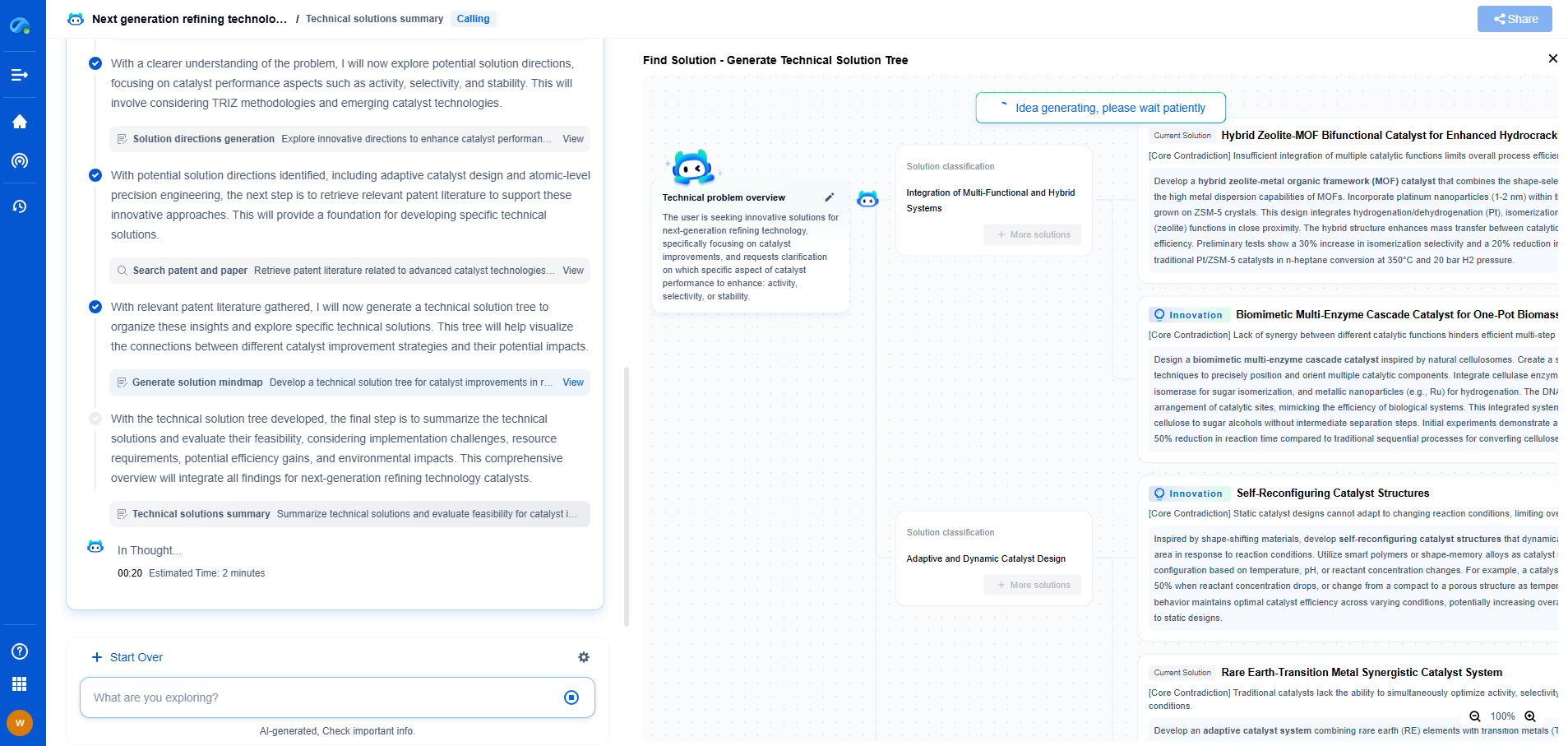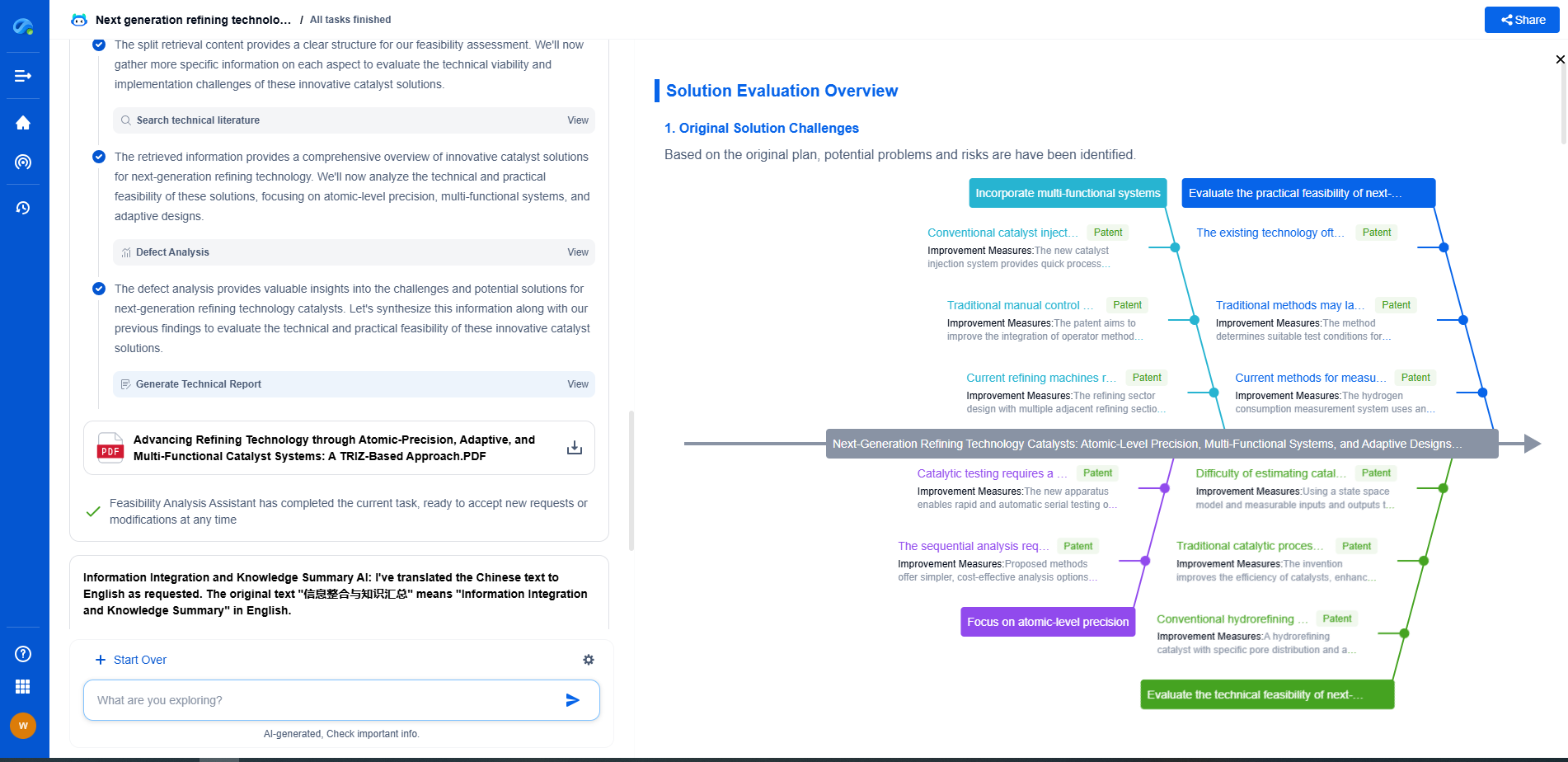How Bidirectional Energy Flow Enables Smart EV Charging
JUN 26, 2025 |
In recent years, the evolution of electric vehicles (EVs) has sparked a significant transformation in the automotive and energy sectors. One of the most groundbreaking developments is bidirectional energy flow, a concept that enhances smart EV charging and offers numerous benefits to both consumers and the energy grid. Understanding bidirectional energy flow and its implications for smart EV charging is crucial as we move toward a more sustainable future.
What is Bidirectional Energy Flow?
Bidirectional energy flow, also known as vehicle-to-grid (V2G) technology, allows electricity to flow both to and from an electric vehicle. Traditional charging systems only permit electricity to flow into the vehicle, but with bidirectional charging, EVs can send excess energy stored in their batteries back to the grid or even power homes and businesses. This two-way flow of energy enables a more dynamic interaction between EVs and the power grid.
Benefits of Bidirectional Energy Flow
1. Grid Stability and Load Balancing
One of the primary advantages of bidirectional energy flow is its ability to provide grid stability and load balancing. During peak demand periods, EVs can discharge stored energy back into the grid, helping to reduce strain and prevent blackouts. Conversely, during low-demand periods, EVs can be charged when energy is more abundant and cheaper, optimizing the overall energy system.
2. Cost Savings for Consumers
Bidirectional energy flow can lead to significant cost savings for EV owners. By participating in V2G programs, vehicle owners can sell excess energy back to the grid during peak times at higher rates, generating additional income. Moreover, using stored energy to power homes during high-cost periods can further reduce electricity bills, making smart EV charging an economically attractive option.
3. Enhanced Renewable Energy Integration
The integration of renewable energy sources like solar and wind is crucial for a sustainable energy future. However, these sources are intermittent and can cause imbalances in the grid. Bidirectional energy flow helps mitigate these challenges by storing surplus renewable energy in EV batteries and releasing it when generation is low or demand is high, thus enhancing the overall efficiency and reliability of the energy system.
Implementing Smart EV Charging
Smart EV charging systems are integral to maximizing the benefits of bidirectional energy flow. These systems use advanced algorithms and real-time data to optimize charging times, considering factors such as electricity prices, grid demand, and renewable energy availability. By doing so, smart charging not only reduces energy costs for consumers but also minimizes the environmental impact of EV charging.
1. Demand Response Capabilities
Smart EV charging facilitates demand response programs, where EV owners can adjust their charging patterns based on signals from the grid operator. This flexibility helps balance grid demand, ensuring that electricity supply meets consumption needs without overloading the system. In return, participants might receive financial incentives, further encouraging the adoption of smart charging practices.
2. Integration with Smart Home Systems
The convergence of smart EV charging with smart home systems offers a seamless energy management solution. Homeowners can automate charging schedules to align with the use of renewable energy sources or lower energy tariffs. Additionally, EVs can act as backup power sources during outages, enhancing energy resilience at home.
Challenges and Future Prospects
Despite the promising benefits, implementing bidirectional energy flow and smart EV charging faces several challenges. These include the need for standardized protocols, ensuring battery longevity, and developing supportive infrastructure. Moreover, consumer awareness and acceptance are critical to the widespread adoption of these technologies.
Looking ahead, advancements in battery technology, increased availability of V2G-enabled vehicles, and supportive regulatory frameworks will likely propel the growth of bidirectional energy flow. As the technology matures, its role in creating a sustainable, efficient, and resilient energy ecosystem will become increasingly significant.
Conclusion
Bidirectional energy flow is revolutionizing the way we think about EV charging and energy management. By enabling smart EV charging, this technology not only offers financial and environmental benefits to consumers but also contributes to a more stable and efficient power grid. As we continue to innovate and overcome challenges, bidirectional energy flow will play a pivotal role in shaping the future of transportation and energy.
Stay Ahead in Power Systems Innovation
From intelligent microgrids and energy storage integration to dynamic load balancing and DC-DC converter optimization, the power supply systems domain is rapidly evolving to meet the demands of electrification, decarbonization, and energy resilience.
In such a high-stakes environment, how can your R&D and patent strategy keep up?
Patsnap Eureka, our intelligent AI assistant built for R&D professionals in high-tech sectors, empowers you with real-time expert-level analysis, technology roadmap exploration, and strategic mapping of core patents—all within a seamless, user-friendly interface.
👉 Experience how Patsnap Eureka can supercharge your workflow in power systems R&D and IP analysis. Request a live demo or start your trial today.
- R&D
- Intellectual Property
- Life Sciences
- Materials
- Tech Scout
- Unparalleled Data Quality
- Higher Quality Content
- 60% Fewer Hallucinations
Browse by: Latest US Patents, China's latest patents, Technical Efficacy Thesaurus, Application Domain, Technology Topic, Popular Technical Reports.
© 2025 PatSnap. All rights reserved.Legal|Privacy policy|Modern Slavery Act Transparency Statement|Sitemap|About US| Contact US: help@patsnap.com

